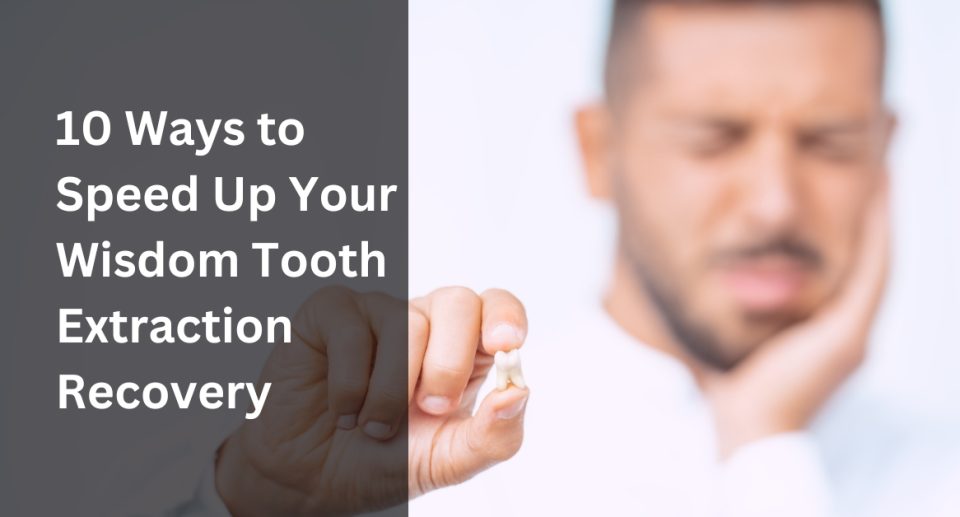Recovering from an amputation is a complex and multifaceted journey that demands only physical rehabilitation but also careful attention to nutrition. The right nutrients can significantly impact the healing process, helping to repair tissues, support immune function, and boost overall energy levels. Adequate nutrition is crucial for managing pain, preventing complications, and adapting to life with a prosthetic limb. However, understanding which nutrients are essential and how to incorporate them into your diet can be overwhelming.
The nutrients needed for recovery, offer practical tips for maintaining a balanced diet, and address common challenges that amputees may face. By focusing on a well-rounded nutrition plan, you can optimize your recovery, enhance your quality of life, and pave the way for a smoother transition to your new lifestyle.
What Is An Amputee?
An amputee prosthetic is an artificial device designed to replace a missing limb or body part lost due to injury, disease, or congenital conditions. These prosthetics aim to restore the functionality and appearance of the amputated limb, enabling individuals to perform daily activities and improve their quality of life.
Modern prosthetics are custom-made and can range from simple mechanical devices to advanced robotic limbs that mimic natural movements. They are designed to fit comfortably and securely, providing users with greater mobility, independence, and confidence in their personal and professional lives.
A prosthetic manufacturer plays an important role in this process by designing and creating artificial limbs tailored to the specific needs of each individual. These manufacturers work closely with medical professionals and patients to ensure that the prosthetics not only fit comfortably and securely but also provide the best possible performance.
Whether it’s a simple mechanical device or an advanced robotic limb, prosthetic manufacturers are at the forefront of innovation, helping amputees regain their mobility, independence, and confidence.
What Are The Essential Nutrients For Amputee Recovery?
After an amputation, your body needs specific nutrients to aid in recovery. Here’s a look at the most important ones:
1. Protein
Protein is crucial for wound healing and muscle repair. When you lose a limb, your body needs extra protein to rebuild tissues and maintain muscle strength. Good sources of protein include lean meats, poultry, fish, eggs, dairy products, legumes (like beans and lentils), and nuts.
2. Vitamin C
Vitamin C is essential for the production of collagen, a protein that helps heal wounds and maintain skin integrity. It also boosts the immune system, which is important for preventing infections. Foods rich in vitamin C include oranges, strawberries, bell peppers, and broccoli.
3. Calcium
Calcium helps build and maintain strong bones. After an amputation, it’s especially important to support bone health, especially if you’re adjusting to a new prosthetic limb. Dairy products (like milk and cheese), leafy green vegetables (like spinach), and fortified plant-based milk are excellent sources of calcium.
4. Vitamin D
Vitamin D aids in the absorption of calcium and supports bone health. It also plays a role in immune function. Sunlight is a natural source of vitamin D, but you can also find it in fatty fish (like salmon), fortified dairy products, and egg yolks.
5. Iron
Iron is important for energy levels and the production of red blood cells. After an amputation, you might need extra iron to help with healing and to combat any potential blood loss. Good sources include red meat, poultry, beans, lentils, and fortified cereals.
6. Omega-3 Fatty Acids
Omega-3 fatty acids help reduce inflammation and support joint health. They can also aid in wound healing. You can get omega-3s from fatty fish (like mackerel and sardines), flaxseeds, chia seeds, and walnuts.
7. Vitamins B
Vitamins B are important for energy metabolism and nerve function. They help your body convert food into energy and support overall nerve health, which can be crucial during recovery. Sources include whole grains, meat, eggs, and dairy products.
How Can A Balanced Diet Maintained During Amputee Recovery?
Maintaining a balanced diet during recovery is essential for ensuring you get all the nutrients your body needs. Here are some tips to help you stay on track:
1. Plan Your Meals
Planning your meals ahead of time ensures you include all the essential nutrients your body needs. Create a weekly meal plan that incorporates a variety of proteins, vegetables, and grains. This helps avoid last-minute unhealthy choices and makes grocery shopping easier and more organized.
2. Eat Regularly
Eating regular meals and snacks throughout the day helps maintain your energy levels and supports your body’s recovery. Aim for three main meals and two healthy snacks daily. This consistent intake keeps your metabolism steady and provides a steady supply of nutrients for healing.
3. Stay Hydrated
Drinking plenty of water is essential for your overall health and recovery. Proper hydration supports bodily functions and helps with digestion. Aim to drink at least 8 glasses of water each day, and consider adjusting this based on your activity level and climate.
4. Incorporate Variety
A varied diet ensures you get a wide range of nutrients. Include different fruits, vegetables, proteins, and grains in your meals. This not only keeps your diet interesting but also ensures you receive all the vitamins and minerals necessary for optimal recovery.
5. Monitor Portion Sizes
Keeping an eye on portion sizes helps you manage your calorie intake and supports weight management. Eating appropriate portions ensures you get enough nutrients without overeating. Use smaller plates and pay attention to serving sizes to maintain a balanced diet.
6. Consult a Dietitian
Working with a registered dietitian can provide personalized advice tailored to your specific needs. A dietitian can help you create a meal plan that meets your nutritional requirements, addresses any dietary restrictions, and supports your recovery goals effectively.
What Are The Challenges Of Maintaining Proper Nutrition For Amputees?
Maintaining proper nutrition can be challenging during recovery, especially for amputees. Some common challenges include:
1. Appetite Changes
Recovery can sometimes affect your appetite, leading to changes in how much or what types of food you want to eat. Stress, pain, and medications can all influence appetite. Finding appealing and nutritious foods can help address this challenge.
2. Adjusting to New Eating Habits
After an amputation, you might need to adjust your eating habits to accommodate changes in activity levels or nutritional needs. For example, you might need more protein to support muscle repair or additional vitamins for wound healing.
3. Emotional Eating
Emotional stress or changes in mood can lead to emotional eating, where you might turn to food for comfort. This can impact your ability to maintain a balanced diet. It’s important to find healthy coping mechanisms and seek support if needed.
4. Limited Mobility
If your mobility is limited, preparing meals might become more difficult. Consider using convenient, healthy meal options or asking for help with meal preparation from family or friends.
5. Managing Chronic Conditions
If you have other health conditions or dietary restrictions, it can be challenging to balance those needs with the requirements for recovery. Working with a healthcare provider or dietitian can help you navigate these complexities.
How Can One Monitor Nutritional Progress During Recovery?
Monitoring your nutritional progress during recovery is essential to ensure you’re getting the right nutrients and making the necessary adjustments to support your healing process. Here are some effective methods to help you keep track of your nutritional progress:
1. Keep a Food Diary
What to Record: Write down everything you eat and drink, including portion sizes, meal times, and any snacks. Note any symptoms or changes in how you feel after eating.
Benefits: A food diary helps you track your nutrient intake and identify any patterns or deficiencies. It also allows you to see if you’re meeting your dietary goals.
2. Track Your Weight
How to Monitor: Weigh yourself regularly, ideally at the same time each day and under the same conditions (e.g., before breakfast).
Benefits: Tracking your weight helps you ensure you’re maintaining a healthy weight. Significant weight changes might indicate issues with your diet or overall health, which can be addressed with your healthcare provider.
3. Monitor Energy Levels
What to Observe: Pay attention to fluctuations in your energy levels throughout the day. Note if you feel consistently energetic or fatigued.
Benefits: Consistent energy levels often reflect balanced nutrition and effective recovery. If you experience persistent fatigue, it might signal a nutritional imbalance or need for dietary adjustments.
4. Assess Wound Healing
How to Evaluate: Observe how your wounds are healing and whether there are any signs of complications, such as increased redness, swelling, or delayed healing.
Benefits: Proper nutrition supports efficient wound healing. If you notice any issues with healing, it may indicate a need for changes in your diet or additional support.
5. Use Nutritional Apps
How to Use: Utilize apps designed for tracking food intake, nutrient consumption, and dietary goals. Many apps offer features like barcode scanning, meal logging, and nutrient analysis.
Benefits: Nutritional apps make it easier to monitor your diet, set goals, and track progress in real time. They can also provide insights and reminders to stay on track.
6. Monitor Physical Symptoms
What to Watch For: Be aware of any physical symptoms such as digestive issues, skin changes, or unusual cravings. These can sometimes indicate nutritional imbalances or deficiencies.
Benefits: Paying attention to physical symptoms can help you identify potential dietary issues and seek appropriate advice to address them.
7. Review Lab Results
How to Use: If your healthcare provider orders blood tests or other diagnostic tests, review the results with them to understand your nutrient levels and overall health.
Benefits: Lab results can provide objective data on your nutritional status, such as vitamin and mineral levels, helping to tailor your diet to your specific needs.
8. Set and Review Goals
What to Set: Establish clear, achievable nutritional goals, such as increasing protein intake or incorporating more fruits and vegetables into your diet.
Benefits: Setting goals helps you stay focused on your dietary needs and track your progress. Regularly reviewing and adjusting these goals based on your recovery can ensure continued improvement.
Conclusion
Proper nutrition is a cornerstone of recovery after amputation. By focusing on essential nutrients such as protein, vitamins, and minerals, and maintaining a balanced diet, you can support your body’s healing process and overall well-being. Monitoring your nutritional progress through various methods ensures you stay on track and make necessary adjustments to support your recovery. With the right approach to nutrition, you can enhance your recovery journey and work towards a healthier, stronger future.





